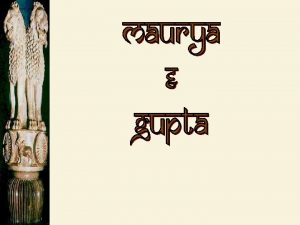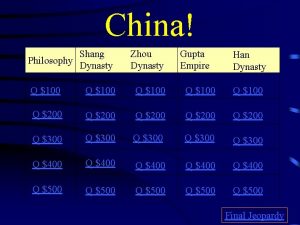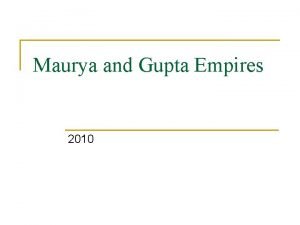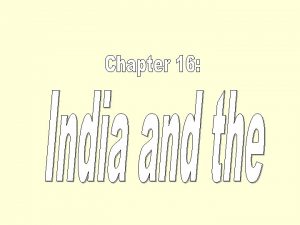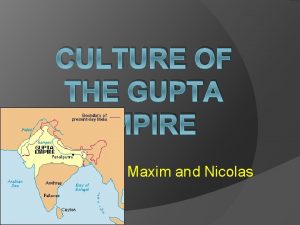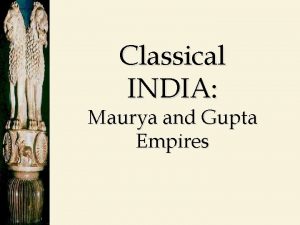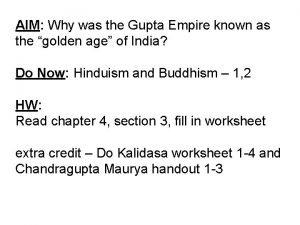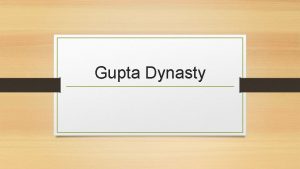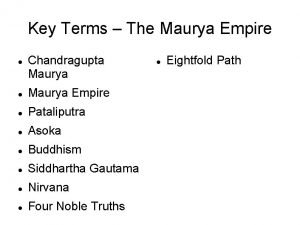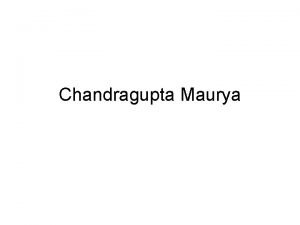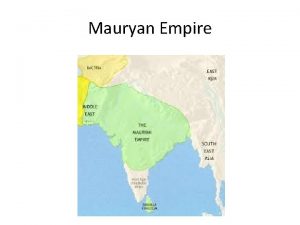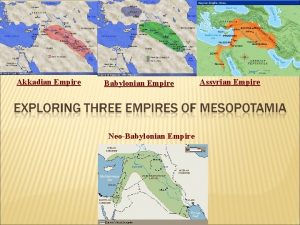Key Terms The Gupta Empire Magadha Chandragupta Samudragupta












- Slides: 12

Key Terms – The Gupta Empire • • • Magadha Chandragupta Samudragupta Chandragupta II Kalidasa Ayabhata Caste System Midwives Sati

The Beginning of the Gupta Empire • 320 A. D. new ruler would take over the northeastern region of India. • Chandragupta ruler who managed to consolidate the previously divided northern territories of Magadha. • Chandragupta, through his efficient rule would be able to start a new dynasty known as the Gupta Dynasty which lasted from 320 -467 A. D.

Samudragupta • Considering that the other parts of India were still divided into small parts, the second Gupta emperor would take up the task of reuniting them. • Samudragupta (330 -375) would reconquer many of the independent kingdoms, would absorb the northwestern region of India extending as far down as the Deccan.

Chandragupta II • Chandragupta II would acquire control of the Silk Road trade route entering India. • By defeating the Shakas (a group from the borders of China), he would be able to gain access to the Silk Road trade route which had previously been blocked. • Through his actions, he was able to enter into trade with the Middle East which improved the economy of the empire.

Cultural Changes • Through their acquisitions, the Guptas were able to enjoy a period of great intellectual and cultural achievement. • Colleges, universities and libraries thrived and also maintained Sanskrit writings of the past. • Many masterpieces were created at this time which stood up against the writings of the west.

Kalidasa • Kalidasa wrote plays in verse, mostly revolving around love, adventure, moral lessons, and beauty in nature. • The Mahabhrata and the Ramayana were completed during the period of 400 -450.

Changes in Science and Math • Invented the decimal system and the concept of zero (later considered arabic numerals). • Pi was calculated, which represents the relationship between the circumference of a circle and its diameter. • Ascertained that the earth was a sphere and the causes of lunar eclipses.

Government Structure • Princes controlled the outer territories – Collected taxes and tribute from other territories – Usually had ties to the emperor through marriage alliances – Outlying areas were easily indirectly controlled through Hinduism religious leaders exercised powers over their societies.

The Caste System • In the 1500’s B. C. , around the same time as the Indus Valley cities sprang about, the Aryan tribes entered into India. • The Aryans introduced the caste system to India; broke the society into four major castes. • There were to be no interrelations between the castes since it was strictly forbidden. • Hindu missionaries would spread the faith, the ideas behind the castes, and the Sanskrit language to other areas in Southeast Asia.

Women in India • Wealthier families usually educated their daughters, giving them the ability to create works in literature, though many would not ever become famous. • Women usually became midwives women trained to deliver babies. • Women were usually arranged to be married at a young age women could not remarry or inherit their husband’s wealth.

Sati • Sati the act of a widow throwing oneself into their husband’s funeral pyre. • This practice usually ensured that the husband wife would spend 35 million years of happiness together. • Women would be shunned and destroy their family names if they were to refuse. • This practice would be inhibited by the British upon their colonization of the territory in the 17 th and 18 th Centuries. • It is still practiced in some areas today.

The End of the Gupta Empire • Skandragupta Gupta emperor who managed to fight off the invading Huns. • Even though the Guptas were able to repel the Huns, they were unable to maintain their now weakened society. • Trade began to decline and the empire would fall in the mid 500’s.
 Venn diagram of mauryan and gupta empires
Venn diagram of mauryan and gupta empires Which phrase best describes the eastern and western ghats
Which phrase best describes the eastern and western ghats How did chandragupta hold his vast empire together
How did chandragupta hold his vast empire together Vrijji kingdom
Vrijji kingdom Magadha
Magadha Gupta empire philosophy
Gupta empire philosophy Gupta empire trade routes
Gupta empire trade routes Chandragupta maurya ruled for _____years.
Chandragupta maurya ruled for _____years. 647 ce
647 ce Fall of gupta empire
Fall of gupta empire What is gupta empire known for
What is gupta empire known for Gupta empire social classes
Gupta empire social classes Astronomy gupta empire
Astronomy gupta empire
